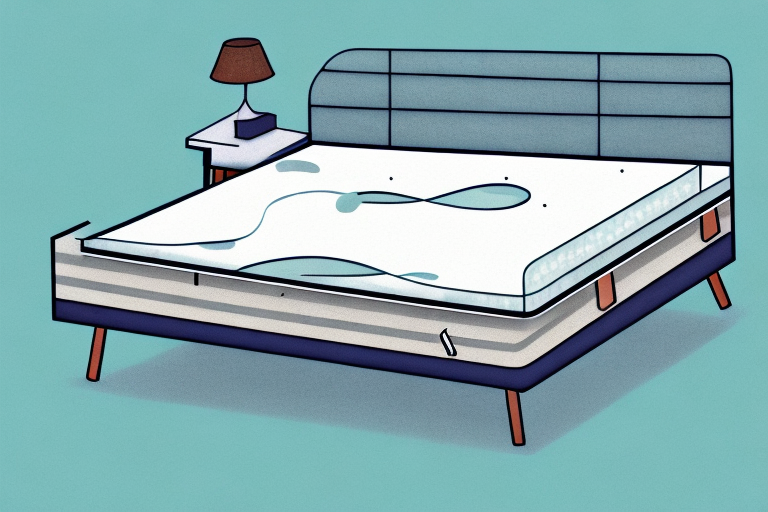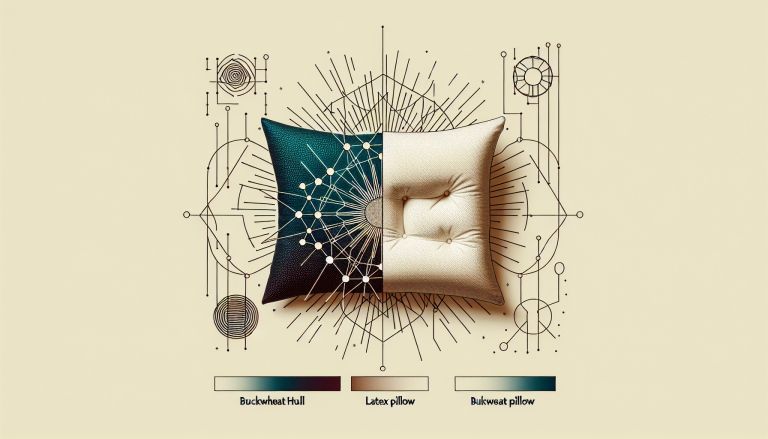If you’re considering purchasing a new mattress, you may have come across the term “sink-in mattress.” These types of mattresses are gaining popularity due to their ability to provide superior comfort and support, but they also come with their own unique set of drawbacks. In this article, we’ll explore the pros and cons of a sink-in mattress and provide you with all the information you need to make an informed purchasing decision.
What is a Sink-in Mattress?
A sink-in mattress, as the name suggests, is a type of mattress that allows you to sink into the surface. These mattresses are typically made from memory foam, latex, or a combination of both. Memory foam is a popular choice for sink-in mattresses as it conforms to the shape of your body, providing personalized support and comfort. This type of mattress is often compared to a traditional innerspring mattress, which has a firmer surface that doesn’t allow for as much sinking.
One of the benefits of a sink-in mattress is that it can help relieve pressure points on your body, which can lead to a more restful sleep. This is especially beneficial for people who suffer from chronic pain or have injuries that require extra cushioning. Additionally, sink-in mattresses can be a good choice for couples who have different sleeping preferences, as the mattress can contour to each person’s body without disturbing the other.
It’s important to note that sink-in mattresses may not be the best choice for everyone. Some people may find that they sink too deeply into the mattress, which can make it difficult to move around or get out of bed. Additionally, sink-in mattresses may not provide enough support for people who need a firmer surface to sleep on. It’s always a good idea to try out a mattress before purchasing it to ensure that it’s the right fit for your needs.
The Benefits of a Sink-in Mattress
Sink-in mattresses are known for their ability to provide superior comfort and support. Here are some of the advantages of using a sink-in mattress:
- Pressure Relief: Sink-in mattresses are designed to distribute your weight evenly across the surface, which can help to relieve pressure points and reduce pain.
- Personalized Support: Memory foam mattresses can provide personalized support by conforming to the shape of your body. This means that your mattress will adapt to your specific contours, providing the right amount of support where you need it most.
- Reduced Motion Transfer: Sink-in mattresses are known for their ability to reduce motion transfer, which means that you won’t be disturbed by your partner’s movements during the night.
Aside from the benefits mentioned above, sink-in mattresses also have other advantages that you might want to consider. One of these is their durability. Sink-in mattresses are made of high-quality materials that can withstand wear and tear, making them a good investment in the long run.
Another advantage of sink-in mattresses is their versatility. They come in different sizes and shapes, which means that you can find one that fits your specific needs. Whether you’re looking for a mattress for your master bedroom or a guest room, there’s a sink-in mattress that can meet your requirements.
Comfort and Support Provided by a Sink-in Mattress
The comfort and support provided by a sink-in mattress is one of the biggest selling points for these types of mattresses. Because they allow you to sink into the surface, you’ll experience a feeling of weightlessness that can be incredibly soothing. In addition, the personalized support provided by the mattress can help to alleviate pain and discomfort, especially if you suffer from back, neck, or joint problems.
Another benefit of sink-in mattresses is that they can help to reduce motion transfer. This means that if you share your bed with a partner, you’re less likely to be disturbed by their movements during the night. Sink-in mattresses are also known for their durability, as they’re often made from high-quality materials that can withstand years of use without losing their shape or support.
The Drawbacks of a Sink-in Mattress
While sink-in mattresses provide many benefits, there are also some drawbacks to consider. Here are a few of the most significant disadvantages:
- Heat Retention: Memory foam mattresses are known for their ability to retain heat, which can be uncomfortable for some people. If you tend to overheat during the night, a sink-in mattress may not be the best choice for you.
- Off-Gassing: Sink-in mattresses are made from materials that can emit volatile organic compounds (VOCs), such as formaldehyde, which can be harmful to your health.
- Cost: Sink-in mattresses can be more expensive than traditional innerspring mattresses due to the high-quality materials used in their construction.
Another potential drawback of sink-in mattresses is that they may not provide enough support for people with certain medical conditions, such as chronic back pain or arthritis. While sink-in mattresses can be comfortable, they may not offer the necessary support to alleviate pain and discomfort. It’s important to consult with a healthcare professional before purchasing a new mattress if you have any medical concerns.
How to Choose the Right Type of Sink-in Mattress
If you’re interested in purchasing a sink-in mattress, there are a few factors to consider to ensure that you choose the right one for your needs. Here are some things to keep in mind:
- Firmness: Sink-in mattresses come in a range of firmness levels, from soft to firm. Consider your personal preferences and any physical issues you may have when choosing the right firmness level.
- Material: Choose a sink-in mattress made from high-quality materials, such as memory foam or latex, to ensure durability and comfort.
- Breathability: If you tend to overheat during the night, look for a sink-in mattress that is designed to promote airflow and prevent heat retention.
Another important factor to consider when choosing a sink-in mattress is the size. Make sure to measure your bed frame or platform to ensure that the mattress will fit properly. Additionally, consider the weight capacity of the mattress if you plan on sharing it with a partner or pet. Some sink-in mattresses may not be able to support the weight of multiple people, which can lead to sagging and discomfort over time.
Sink-in Mattresses vs. Traditional Mattresses: What’s the Difference?
The main difference between a sink-in mattress and a traditional innerspring mattress is the level of support and comfort provided. While innerspring mattresses have a firmer surface that doesn’t allow for as much sinking, sink-in mattresses allow you to sink into the surface of the mattress, providing personalized support and comfort.
Another difference between sink-in mattresses and traditional mattresses is the materials used. Sink-in mattresses are typically made with memory foam or latex, which contour to your body and provide pressure relief. Traditional mattresses, on the other hand, are often made with coils or springs, which can create pressure points and cause discomfort.
Additionally, sink-in mattresses are often better at isolating motion than traditional mattresses. This means that if you share a bed with a partner who moves around a lot during the night, you’re less likely to be disturbed by their movements on a sink-in mattress. Traditional mattresses, on the other hand, can transfer motion more easily, which can lead to a disrupted sleep.
Factors to Consider Before Purchasing a Sink-in Mattress
Before you invest in a sink-in mattress, there are a few factors to consider:
- Budget: Sink-in mattresses can be more expensive than traditional innerspring mattresses, so it’s important to consider your budget when making a purchasing decision.
- Health Concerns: If you have allergies or respiratory issues, you may want to choose a sink-in mattress made from natural materials that don’t emit harmful VOCs.
- Sleeping Position: Consider your preferred sleeping position when choosing a sink-in mattress. Some mattresses are better suited for back sleepers, while others provide more support for side sleepers.
Health Benefits Associated with Using a Sink-in Mattress
Sink-in mattresses can provide a range of health benefits, including:
- Pain Relief: Sink-in mattresses can help to alleviate pain and discomfort, especially if you suffer from back, neck, or joint problems.
- Improved Sleep Quality: The personalized support provided by a sink-in mattress can help to improve your overall sleep quality, leading to better health and wellbeing.
- Reduced Stress: The feeling of weightlessness provided by a sink-in mattress can be incredibly soothing and can help to reduce stress levels.
Maintaining and Cleaning a Sink-in Mattress: Tips and Tricks
To keep your sink-in mattress in top condition, follow these tips and tricks:
- Rotate: Rotate your mattress every three months to ensure even wear and tear.
- Spot Clean: If you spill something on your mattress, spot clean the area with a mild detergent and a clean cloth.
- Use a Mattress Cover: Protect your mattress from spills, dust mites, and other allergens by using a mattress cover.
Cost Comparison: Are Sink-in Mattresses Worth the Investment?
Sink-in mattresses can be more expensive than traditional innerspring mattresses, but many people believe that they are worth the investment due to the superior comfort and support that they provide. If you’re on a tight budget, consider purchasing a less expensive sink-in mattress or waiting for a sale or promotion before making your purchase.
Customer Reviews: What Do People Think About Their Experience with Sink-in Mattresses?
Many people who have purchased sink-in mattresses report high levels of satisfaction with their purchase. Here are some common themes that emerge in customer reviews:
- Comfort: Customers report that sink-in mattresses are incredibly comfortable and provide superior support.
- Improved Sleep Quality: Many people report that they experience improved sleep quality when using a sink-in mattress.
- Personalized Support: Customers appreciate the personalized support provided by sink-in mattresses, which conforms to their specific contours.
Common Misconceptions about Sink-in Mattresses
There are several common misconceptions about sink-in mattresses, including:
- Lack of Support: Many people assume that sink-in mattresses do not provide enough support, but this is not necessarily true. Sink-in mattresses are designed to provide personalized support that conforms to your specific contours.
- Heat Retention: While it’s true that some sink-in mattresses may retain heat, many modern mattresses are designed to promote airflow and prevent heat retention, leading to a more comfortable sleep experience.
- Off-Gassing: While sink-in mattresses may emit VOCs initially, many modern mattresses are made from natural materials that do not emit harmful chemicals.
Alternatives to a Sink-in Mattress: What Are Your Options?
If a sink-in mattress isn’t right for you, there are several alternatives to consider:
- Innerspring Mattresses: Innerspring mattresses provide a firmer surface that does not allow for as much sinking as sink-in mattresses.
- Hybrid Mattresses: Hybrid mattresses combine the support of an innerspring mattress with the comfort of memory foam or latex.
- Latex Mattresses: Latex mattresses are known for their durability and comfort, and provide more bounce than memory foam mattresses.
Conclusion: Is a Sink-in Mattress Right for You?
Choosing the right mattress is a personal decision that depends on your individual preferences and needs. Sink-in mattresses provide superior comfort and support, but they also come with their own unique set of drawbacks. Consider your budget, sleeping position, and personal preferences when making a purchasing decision, and be sure to do your research to find the right type of mattress for your needs.








